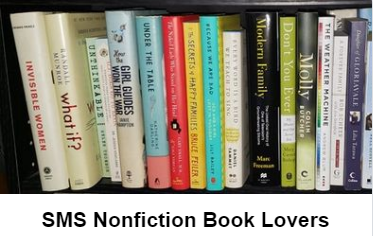Stars: *****
The Everything Series
This was an awesome toddler handbook. This is a long review. If you don’t want to read the whole thing, scroll down and scan for the bolded parts. These are the most important points.
Chapters are: One Giant Leap for Baby, Communication Coups, Growing Bodies, Brain Power, The Road to Independence, Potty Proud, Safety First, Doling out Discipline, Food Fiesta, Sleepy Time, Fun and Games, Parenting Tricks and Tips and Super Toddlers There is also an Appendix of what toddlers should be learning at what age and resources.
This book is for parents of toddlers ages 1-3. It offers sound advice including some new thing I hadn’t heard.
The first chapter is all about learning to walk and how you can help your child learn and then perfect walking. Also information on pigeon toes and buying the right size shoes and socks.
Chapter two explains how babies naturally progress from cooing through to complex sentences and how to help them through each stage. Also Parentese and if it should be used, teaching your child sounds, bilingual babies and how their first words aren’t pronounced properly and how you can encourage proper pronunciation. Also books, stuttering, recognizing disabilities and speech defects and games to promote learning.
Chapter three covers physical growth and skills and how to encourage them. Games and activities to help with balance, flexibility, agility and strength. The typical progression from crawling to climbing to walking to running to jumping and skipping and everything in between. Why they don’t cry as soon as they hurt themselves and why this doesn’t mean they aren’t really hurt. Clumsy kids and the pincer grasp, teeth and gender issues, early sex play and touching and recognizing sexual abuse.
Chapter four covers how the mind works and grows, the roles and responsibilities of parents, teaching daily living skills, math skills and problem-solving skills. How to teach the concept of all gone and the concept of categories. The best way to teach colors, shapes and locations. How the toddler’s memory works and why because of this, toddler’s find comfort in objects.
Chapter five talks about emotional development and how toddlers can get confused because
they want to do things for themselves but often can’t and are often afraid to as well. The challenge to parents to allow their children to do things for themselves and not automatically take over because it’s not done “their” way. Stranger anxiety, comfort objects, understanding feelings and how to develop initiative instead of shame and guilt. The hard lesson of delaying gratification (not getting what they want exactly when they want it.)
Chapter six cover potty training, how to detect readiness signs and how to proceed. My main complaint about the whole book is in this chapter. At the beginning of the chapter the author makes the case for cloth diapers which is fine but to me it seemed almost condescending and I felt like a bad mother because I use disposables. However this is just one page out of a 290 page book. This chapter talks about not only how to detect signs of readiness but how to help them into readiness too. The importance of choosing specific terms and sticking to them so as not to confuse your child. Tips on teaching proper bathroom hygiene and the use of rewards and praise and how to use them correctly. Target practice, tracking progress, switching to underwear, bed wetting and bowel problems.
Chapter 7 has basic safety info and tips including a section on firearms which has this interesting info: “Parents must keep guns and ammunition locked, and they must store them separately. Hiding them isn’t enough and here’s why: An investigative reporter interviewed youngsters in their homes about where the family’s gun was located. …the common response was, “I’ll show you but you have to promise not to tell. I’m not supposed to know.” In one case, the reporter examined the gun and said, “but there aren’t any bullets in here.” “Up there,” the little one said, opening the closet door and pointing to a shelf high above his head.” Also bathtub seat safety, toy chest safety, poisons, being prepared, car and fire safety and lifesaving skills.
Chapter 8 is all about no-nos and how to make less of them. The most helpful part here was the section titled The Problem with No. “Since negatives like don’t occur at the beginning of sentences, toddlers often miss them. They don’t even realize they’re being spoken to until the parent has made it halfway through the sentence. So when you say, “Don’t touch the stove,” the toddler may only hear “…touch the stove” or “… the stove.” It’s no wonder toddlers so often do exactly the opposite of what their parents are telling them!” Also in this chapter, distraction, redirection, how to handle dangerous situations (like running out in front of a car) and the problem with praise (another great section). Time-outs, spanking, tantrums and the different kinds of them.
Chapter 9 explains how toddlers eat less than they did a few months before because their growth has slowed down considerably. Talk about weaning and solids, toddler size portions and how many they need and how to make sure that the little your toddler DOES eat is worth it. How much liquids toddlers need and what it should come from and the joy of dipping. Why they take long to eat and why you shouldn’t be rushing them. How to encourage them to eat a wide variety of foods by helping to grow and prepare it. Food struggles, when you child craves in-edibles, high chairs and booster seats and restaurant survival.
Chapter 10 covers typical sleep amounts for toddlers and how to tell when they are sleepy instead of tired. Schedules, family bed, toddler bed transitions, using bedrooms as timeout spaces, rituals, sleep cycles, nightmares and insomnia.
Chapter 11 covers the best toys for toddlers and how it helps them learn. Recipes for finger paints and play dough and science fun. One small note here. The recipe for silly putty is unsafe. It includes white glue and what child wouldn’t try to taste it? I don’t recommend making it. Arts, dress up, water fun, forbidden toys and outdoor play. Also cleanup games, toy storage and birthday parties.
Chapter 12 had the most new stuff that I hadn’t heard before. Misbehaviour management had some great ideas by focusing on specific problems many of us experience. For example what to do when your child hits the dog or empties drawers. If the child seems to be in constant trouble, perhaps they really need your attention. Why hyperactivity describes most toddlers and why it’s not a disease in toddlers. Different approaches to discipline, none of them right or wrong. How to help an out of control toddler, cry babies, whiners and those with fears. Why they cause so much trouble when you are on the telephone and breaking the pacifier habit. Thumb sucking, waiting room blues, dealing with death and how to keep your relationships intact. Common parenting styles and their pros and cons.
Chapter 13 is about how to recognize possible gifted toddlers and how to help increase your child’s IQ. How to teach reading.
Overall this book was AWESOME!








